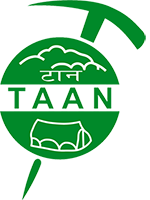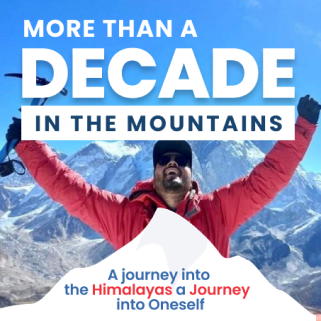
Six of the Most Popular Festivals in Nepal

Six of the Most Popular Festivals in Nepal
swotah travel
2195
30, 08 2022
When are These Festivals Held, and What are They About?
Nepal is a land of festivals! There is literally a different festival every day! Some are national festivals where the whole country celebrates, and some are limited to a certain area i.e., the Kathmandu Valley, and others belong to certain community groups or even individual households.
It is hard to miss being in Nepal at festival time! But some festivals are more important, colorful, and fun than others. During big, colorful festivals is perhaps the best time to visit Nepal.
Here are some of the best festivals regarding their meaning to locals and their colorful ‘watchability’ for visitors.
Note: Nepal follows its own calendar that follows the moon. So, no festival fall on the same day each year. The dates vary quite a bit, but I can give you an indication as to the English month, and you can check for the year you are planning to visit.
-
Maha Shivaratri
-
Holi
-
Gai Jatra
-
Teej
-
Dashain
-
Tihar
Maha Shivaratri
February or March
Shiva is THE god in Hinduism. Known as ‘The Destroyer’ within the Hindu trinity of Shiva, Brahma, and Vishnu, he is also the god who created the universe. Thus, he is benevolent as well as fierce. On one side, he is the ascetic yogi living on Mount Kailash; on the other, he is the slayer of demons. His wife is Goddess Parvati, and his son is Lord Ganesh, the elephant-headed god.
In Kathmandu, the Pashupatinath Temple is dedicated to Shiva and is the holiest shrine within Hinduism. It attracts pilgrims and holy men from all over India and beyond. The most auspicious and holy time to visit Pashupatinath is during the festival of Maha Shivaratri, held on a dark night (according to the moon) in February or March. During that time thousands of pilgrims and sadhus come to show their respects. It is a particularly good time to see sadhus dressed in their traditional garments or even naked, only painted with ash! They normally stay a few days around the temple praying, practicing amazing yoga feats and smoking marijuana. In fact on that day it was legal to smoke marijuana until very recently. Now it is restricted to only sadhus within the temple grounds.

It is very busy at the temple, with worshippers lining up for hours to get into the main temple (which non-Hindus cannot enter), so it is wise for visitors to go the night before the main event when it is less crowded but equally as colorful.
Away from the temple, children will hold ropes across the roads to stop passers-by from asking them for money for Shiva, which is no doubt spent on sweets! In the evening, households will light a bonfire to celebrate Shiva.
Holi
March
Fagun Purnima is known by its more common name, Holi, and is a lively festival celebrated in India and Nepal. A similar festival is also held in other South East Asian countries as it celebrates the arrival of spring. It also celebrates the death of the demon Holika. To celebrate both events, colored powder and water are thrown at everyone within reach! This is still celebrated pretty much as it always has in rural areas, but in places like Kathmandu, more recent rules have come into play, so there is no need anymore to fear being soaked with water when walking in the street for up to a week before the main event!

On the day itself, shops and offices are closed; unless you want to participate, you should not venture outside! However, it is fun to participate in a safe environment of your compound or local garden restaurant. If you want a wilder time, Basantapur (Kathmandu Durbar Square) is the place to go! Be aware that color powder is very hard to get off – especially if you have pale skin or blonde hair!
Gai Jatra
August
Legend goes that, centuries ago, King Pratap Malla’s second son died, leading to the Queen suffering from deep depression. Finally, unable to bring her out of her depression, the King organized a parade of families who had also lost a loved one that year. He asked everyone to wear colorful and funny clothes and gave them the right of freedom of speech for that day so that they could make jokes and make others laugh. Thankfully, this plan worked, and it was kept as a tradition that one day a year, all those who had lost a loved one could dress up in funny costumes and parade through town, dancing, and singing.

For the visitor, this may seem like a strange practice, but it commemorates the death of a loved one in a way designed to remember them more positively, and it is a way for the community to mourn together.
Teej
August / September
This festival is only for women. This means they get some time off from work, cooking, and cleaning! During other festivals, while everyone is feasting and celebrating, the women of the house, while also celebrating, will have to prepare the food and take care of household duties as normal. During Teej, it is their time to party.

But before partying, they have to fast and pray for their husband’s life – usually at Pashupatinath or a local temple. Then finally, they can break their fast and sing and dance to their heart's content.
This is another colorful festival, with married women dressed in red and unmarried women in other colorful attire. Female visitors will be invited, almost obliged, to join in the dancing – no lessons required! The best place to see this is at Pashupatinath Temple.
Dashain
September / October
This is the largest festival in Nepal, and its length and celebrations can be compared in some ways to Christmas. In fact, it is to celebrate Goddess Durga’s victory over Mahishasura and lasts about 15 days. Every day is a different celebration and occasion, with some more ‘important’ than others. It is also kind of like an annual holiday as, on the whole, Nepalis don’t get holidays from work at other times.

Although a very important festival in Nepal, there is little of interest for the visitor. It is pretty much a family affair. If you get invited to join a family, be prepared to play cards, eat (lots of goat meat) and drink! On the other hand, it is also a great time to do the Everest Base Camp Trek or the Annapurna Base Camp Trek. Then head back to town for the next great festival – Tihar.
Tihar
September/ October – 2 weeks after Dashain
Again, much like the Christmas festival period, the time between Dashain and Tihar is a bit of a lazy time, with some people taking the whole month as a holiday.
Tihar is much more interesting and exciting than Dashain, as you don’t need a Nepali host to enjoy this festival.
Tihar is also known as the Festival of Lights and is dedicated to the Goddess Laxmi. Next door in India, the same festival is celebrated under the name Diwali. The festival lasts 5 days and celebrates not just the gods but also animals and birds. Laxmi is the Goddess of wealth, so praying to her at this time is very auspicious as she will ensure you have enough money throughout the year. You will see little footsteps leading into homes and shops. These guide Laxmi into the building to ensure she knows where you live! Lamps are lit to guide her way also. Traditional oil lamps and modern electric lights light up towns and villages throughout the country.

On different days the celebrations take different forms. There is a day to celebrate crows – and they get a good dinner on that day! Also, a day to celebrate dogs when dogs receive garlands of flowers around their necks.
The best place to go on Laxmi Puja as a visitor is the Garden of Dreams, where they set out hundreds of oil lamps that you, the visitor, can light when the sun goes down. It is very atmospheric. Of course, restaurants, hotels, and bars will also be colorfully lit during this period.
Other Festivals
As I said at the beginning, there are dozens of festivals in Nepal! Some of the others that are more interesting to visitors include
Nepali New Year (mid-April) involves a lot of eating and drinking. Best seen: everywhere.
Losar (March) actually Losar means new year, and there are quite a number of them in Nepal to match the different ethnic groups. The main Losar celebrations coincide with Chinese New Year and is celebrated by Tibetans, those of Tibetan origin (people from Dolpo etc) and Sherpas. It starts as a family celebration and ends in song and dance around Boudhanath Stupa. Best seen: Boudha or other Buddhist gompas.
Indra Jatra (September) is mainly celebrated in Kathmandu and consists of Indra Jatra and Kumari Jatra. Masked dances and the display of sacred images celebrate Indra, while during the Kumari Jatra, the living goddess Kumari comes out of her palace on her chariot. Best seen: Kathmandu Durbar Square
Chhat (October / November) is primarily a Hindu festival celebrating Surya, the sun god. During this festival, the sun is worshipped by offering up food at sunrise on the banks of rivers or ponds. Best seen: the most interesting place to see Chhat is in Janakpur, where it is celebrated in style in every pond in the city and surroundings. In Kathmandu, you can see offerings made at sunrise in some ponds and along the Bagmati River.
NEWSLETTER SIGNUP
Sign up to receive our trip ideas and travel offers!
Get updates and Exclusive Offers up to 20% Discount








